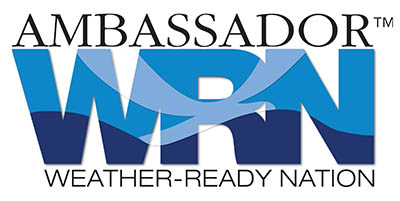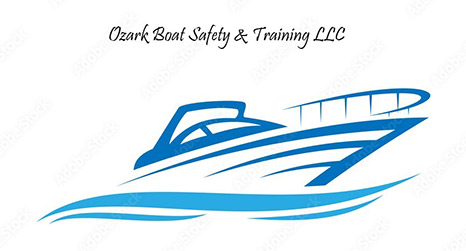
Lake of the Ozarks
Water Safety Council
Mission Statement
The Water Safety Council Of Lake Of the Ozarks is a not-for-profit public service organization formed to:
- Promote boating and water safety at the Lake Of The Ozarks.
- Serve as a local (or regional) source for boating and water safety information for the general public.
- Encourage cooperation, networking, and communication between the member agencies of the council as well as other organizations.
The Lake of the Ozarks Water Safety Council was formed in 2007 with the mission of promoting water safety here at Lake of the Ozarks. Specifically, we promote wearing life jackets and designating captains while recreating on the Lake of the Ozarks.
Contact: lozwsc2025@gmail.com
Boating Laws - Life Jacket Awareness - Upcoming Events - About Us

 We are fortunate to have representation on our Council from the local area Chambers of Commerce, Missouri State Highway Patrol-Water Division, Camden County Health Department, U.S. Coast Guard, Ameren Missouri, and often times are joined by members of our local media outlets, businesses, and various interested citizens. Our mission of promoting water safety has truly benefitted from the relationships formed on this Council.
We are fortunate to have representation on our Council from the local area Chambers of Commerce, Missouri State Highway Patrol-Water Division, Camden County Health Department, U.S. Coast Guard, Ameren Missouri, and often times are joined by members of our local media outlets, businesses, and various interested citizens. Our mission of promoting water safety has truly benefitted from the relationships formed on this Council.
Our mission is simple: We want to keep our Lake safe. We want everyone to wear life jackets, designate a captain, and come and enjoy the Lake and all it has to offer in the safest manner possible. The safety on our Lake is imperative to our residents and to our visitors. We want our visitors to be able to share their happy, positive experiences from their time at Lake of the Ozarks, go back home, and encourage others to do the same. And in turn, this benefits our residents and businesses through the vital economic impact that is generated through tourism.
 The Lake of the Ozarks Water Safety Council thanks you for your time and attention to the issue of water safety, for not only Lake of the Ozarks, but all of Missouri’s waterways.
The Lake of the Ozarks Water Safety Council thanks you for your time and attention to the issue of water safety, for not only Lake of the Ozarks, but all of Missouri’s waterways.
CONTACT USCG
So that our lake boaters have a direct link to Coast Guard Sector Upper Mississippi River. Based on the nature of individual questions, our Public Affairs Officers will respond to questions within a week – often within a couple of days.
Contact Email: SUMR.answers@uscg.mil
Missouri Boating Safety and Laws
Here are a few of the more important Missouri Boating Laws. Please be sure to visit the Missouri State Highway Patrol – Water Patrol Division website for complete Missouri Boating Laws and information on boating safety courses.
By Law – Beginning January 1, 2005, every person born after January 1, 1984, who operates a vessel on Missouri lakes shall possess, on the vessel, a boating safety identification card issued by the Missouri State Water Patrol along with a valid photo I.D. View the complete Missouri State Boating Law Statute
- Operating a boat while intoxicated is a criminal offense subject to a fine and/or time in jail.
- The minimum age for operating any watercraft in the State Of Missouri is 14 years.
- Children under the age of 7 years must WEAR a personal flotation Device (PDF) at all times unless confined in a fully enclosed area.
- All persons born after January 1, 1984, must possess a Missouri boating safety ID card, along with a photo ID to operate a boat or PWC.
- Riding on the bow, gunwales, railing, top of the seat, back, and decking over the back of a motorboat is prohibited.
- It is illegal to operate a boat/PWC at speeds greater than “idle speed” within 100 feet of a: dock, occupied, anchored vessel, buoyed area.
- The speed limit at night is 30mph. Nighttime speed limits begin ½ hour after sunset and continue through 1 hour before sunrise.
- Everyone onboard a PWC while underway must WEAR a U.S. Coats Guard-approved personal flotation device (PFD).
IT IS ILLEGAL for PWC operators to:
- Weave the PWC through congested waterway traffic.
- Jump the wake of another motorboat when visibility is obstructed.
- Become airborne while crossing the wave of another motorboat and within 100 feet of the motorboat creating that wake.
- Operate at greater than “slow, no wake” speed within 50 feet of any other vessel, PWC, or person in the water.
- Operate in a manner that requires swerving at the last possible moment to avoid a collision.

Additional Lake of the Ozarks Maritime Resources Looking for information about a maritime-related subject? Click on the links below to explore our collection of Internet resources. If you know of other sites that you’d like us to add to the list, please send the URL (website address) to lozwsc2025@gmail.com. Please note that LOZ Water Safety Council is not responsible for content on external websites. Here’s our list so far:
Looking for information about a maritime-related subject? Click on the links below to explore our collection of Internet resources. If you know of other sites that you’d like us to add to the list, please send the URL (website address) to lozwsc2025@gmail.com. Please note that LOZ Water Safety Council is not responsible for content on external websites. Here’s our list so far:
Favorite Links A-Z
- Ameren Lake of the Ozarks Permits lake levels and other lake information.
- Boating Safety Videos
- Boat US
- Consolidation of Merchant Mariner Qualification Credentials, final rule—effective April 15, 2009
- Dealing with seasickness
- FCC license information
- Float Plan Free on line float plans
- How to Tie Knots
- International and Inland Navigation Rules
- LOTO Captains Association
- Mariner’s Guide to Nautical Information: comprehensive glossary with detailed explanations
- Maritime and admiralty law firm in Annapolis/
- Missouri Department of Natural Resources
- Missouri Department of Conservation
- Missouri Water Patrol
- Mother of all Maritime Links
- National Marine Manufacturers Association
- National Safe Boating Council
- Rental Boat Safety
- United States Coast Guard, Upper Mississippi St Louis Missouri USCG
- USCG Boating Safety, USCG exam questions and practice tests
- West Marine
Wear It! Life Jacket Awareness
 National Safe Boating Week is May 16 - 22, 2026
National Safe Boating Week is May 16 - 22, 2026
Visit the Wear It! North American Safe Boating Campaign website for complete details of National Safe Boating Week.
It’s a fact, life jackets save lives! Here is some important life jacket information. For full U.S. Coast Guard life jacket requirements and recommendations please visit the U.S. Coast Guard website.
If a life jacket fits properly...
- It will help keep your head above the water.
- If it’s too big, the life jacket will ride up around your face.
- If it’s too small, it will not be able to keep your body afloat.
- Life jackets designed for adults will not work for children!
 How Do Life Jackets Save Lives?
How Do Life Jackets Save Lives?
- When capsized in rough water.
- When thrown from the boat as a result of a collision.
- When injured by rocks or submerged objects.
- When unconscious from carbon monoxide fumes.
- When tossed into freezing water.
- When thrown off balance while fishing.
- When unable to swim because of heavy or waterlogged clothing.
 Try it on for size!
Try it on for size!
- Check the manufacturer’s label to ensure that the life jacket is a proper fit for your size and weight.
- Make sure the jacket is properly fastened.
- Ask a friend to grasp the tops of the arm openings and gently pull up.
- Make sure there is no excess room above the openings and that the jacket does not ride up over your chin or face.
- For the best fit, try the life jacket in shallow water under safe and supervised conditions.
TYPE I: Offshore Life Jackets
These vests are geared for rough or remote waters where rescue may take a while. They provide the most buoyancy, are excellent for flotation, and will turn most unconscious persons face up in the water.
TYPE II: Near-Shore Vests
These vests are good for calm waters when rescue is likely. A Type II may not turn some unconscious wearers face-up in the water.
TYPE III: Flotation Aids
These vests or full-sleeved jackets are good for calm waters when quick assistance or rescue is likely. They are not recommended for rough waters since they will not turn most unconscious persons face up. Type III PFDs are used for water sports such as water-skiing. Some Type III PFDs are designed to inflate when you enter the water.
TYPE IV: Throwable Devices
These cushions and ring buoys are designed to be thrown to someone in trouble. Since a Type IV PFD is not designed to be worn, it is neither for rough waters nor for persons who are unable to hold onto it.
TYPE V: Special-Use Devices
These vests, deck suits, hybrid PFDs, and others are designed for specific activities such as windsurfing, kayaking, or water-skiing. Some Type V PFDs are designed to inflate when you enter the water. To be acceptable, Type V PFDs must be worn and used in accordance with their label.
Personal Flotation Devices (PFDs)
- All vessels 16 feet in length or longer must carry one wearable U.S. Coast Guard-approved PFD (life jacket) for each person on board or being towed. Vessels less than 16 feet in length must carry one wearable or one throwable USCG—approved PFD for each person on board or being towed. Under federal law, however, a wearable PFD is required for each person onboard regardless of vessel length.
- Children under 7 years of age must wear a USCG—approved PFD at all times while onboard any vessel, unless the child is confined in a totally enclosed area of the vessel such as the cabin area of a houseboat or day-cruiser.
- One USCG—approved Type IV personal flotation device must be on board vessels 16 feet or longer and readily accessible, in addition to the above requirements.
- Each person riding on a PWC must wear a USCG—approved Type I, II, III, or V PFD.
Besides being USCG—approved, all PFDs must be:
- In good and serviceable condition.
- Readily accessible, which means you are able to put the PFD on quickly in an emergency. PFDs may not be stowed in closed or locked compartments.
- Of the proper size for the intended wearer. Sizing for PFDs is based on body weight and chest size.
Simply wearing a life jacket isn’t enough – anyone putting on a jacket should make sure that it fits properly and the straps, buckles, or zipper are secure.
Life Jacket Zone Dock Signs
For a Donation of only $20, you can have a Life Jacket Zone Sign to place on your dock as a reminder to wear a life jacket.
Signs can be picked up at the Camdenton Chamber of Commerce.
739 US-54
Camdenton, MO 65020
We can also ship the signs for a $10 shipping fee.
Send us your contact information to lozwsc2025@gmail.com.
Lake of the Ozarks Water Safety Council Upcoming Events
Our Meetings
If you would like to attend a future meeting, please call
Bob May - Water Safety Co-Chair – 660-492-2720
Glen Treankler - Water Safety Co-Chair - 319-560-5934
MEETING LOCATION:
Camdenton Chamber of Commerce
739 US-54, Camdenton, MO 65020
MEETING Date: 3rd Tuesday of the month
MEETING Time: 11:00 AM to 12:00PM
Meeting are open to all public interested in Education and Water Safety.
Lake of the Ozarks Shoot Out Check Presentation
Lake of the Ozarks Water Safety Council is pleased to be part the Lake of the Ozarks Shoot out check presentation. Checks were presented to many volunteer organizations for thier efforts in helping with the Shootout.
$625,000 dollars was given out to various organizations. Which Lake of the Ozarks Water Safety Council was one.
If you want to make a difference and help make Lake Of The Ozarks safer please join us every third Tuesday at 11:00 am Camdenton Chamber of Commerce.
Wear Your Life Jacket to Work Day
Date: Friday, May 26, 2026
Wear Your Life Jacket at Work Day is May 19, 2023. Wear your life jacket, snap a picture while at work, and share on social media. this annual event is a fun, educational way to heighten life jacket awareness. Prizes will be awarded for:
- Best Group photo
- Best Pet photo
- Best Individual photo
Email your photos to lozwsc2025@gmail.com
National Safe Boating Week
Date: May 16 - 22, 2026
The National Weather Service has partnered with the National Safe Boating Council, an NOAA Weather-Ready Nation Ambassador, to help promote safe boating practices. . The 2026 annual celebration of National Safe Boating Week, the National Safe Boating Council and the Lake of the Ozarks Water Safety Council encourages boating enthusiasts to communicate with their local community about responsible boating via digital outreach, launch point reminders, outreach events, vessel safety checks, and more. Watch our site for more information.
Boater Safety Course – Download Flyer
Course Date: February 20 2024
Course Location: Inn at Grand Glaze
Course Date: March 30, 2024
Course Location Big Thunder
Course Time: 9:00 am to 4:00 pm
All operators born AFTER Jan. 1, 1984, MUST have the MO Boating Safety Certification Card to legally operate a motorized vessel or PWC on any MO lake. Any person may take one of the Missouri boater education courses. There is no age limit on who can take the course; however, that person should be able to follow the course material and understand the content. Missouri law states the operator of a boat must be 14 years of age unless accompanied by an adult on board the vessel. A child under 14 years of age operating a vessel (on the lakes of the state) with adult supervision would still need a boater identification card.
– Missouri approved/MSHP- Water Division
– Live-action, high-definition videos
– Comprehensive instruction in MO boating safety education
The Water Patrol Division charges a $15.00 fee for the boater safety identification card and passing students will pay that fee online or by check through the postal system. There is no fee to take the classroom course which will be conducted by a local marine operations trooper.
Class size is limited so enroll today!
Upcoming Events
- Life Jacket Loaner Program: Life Jacket Loaner Stations have been placed at four locations: State Park Public Beaches 1 and 2, Frankie and Louie's Beachfront Bar and Grill, and Captain Ron's Lakefront Restaurant and Resort
- Boating Lessons with Boat US go to www.ozarkboattraining.com for more information.
- Boater Education Seminars/Classes with Water Patrol, LOTO Captain Association, & Water Safety Council. Date: TBD
About Us
CAPTAIN BOB MAY
Bob’s wife and he rented a boat at Bridgeport Marina in the summer of 1974 shortly after they were married. Two weeks later they had our first boat! The 14-footer became 20, then 21, 25, 27, and now they own a 36 Carver Aft Cabin Motor Yacht (1989). Bob has taken many boating education courses including those offered by the Coast Guard, several states required courses, and in 2013 Bob took the eight-day class from World Wide Marine Training to earn his OUPV USCG License. Bob’s summers have been filled with charters, both rental boats and personal boats from 20ft Pontoons to many hours in training aboard the Celebration vessels. he also took the Master Upgrade course in late 2015 and now hold a 50 Ton Master. Bob is an active member of the Water Safety Council here at the Lake for 8 of the 10 years that group has been around. Bob is also the host and producer of a weekly Radio program about Boating on the Osage Beach News Talk KRMS Radio.
CAPTAIN GLEN TREANKLER
Captain Glen In 2004, he and his wife bought their first boat in Iowa after a summer vacation to Lake of the Ozarks the year before. They retired from Iowa careers in 2018 and moved down shortly thereafter. In 2020, Glen completed the US Coast Guard’s Captain class, obtaining his 100 Ton Masters Mariner’s Credentials. He has since captained for private charters, and is a Freedom Boat Club member trainer, and is a certified instructor by the National Safe Boating Council. He is serving on larger ships at Lake of the Ozarks, including the Celebration’s Hopper water taxi, as well as the Tropic Island and Celebration cruise ships.




